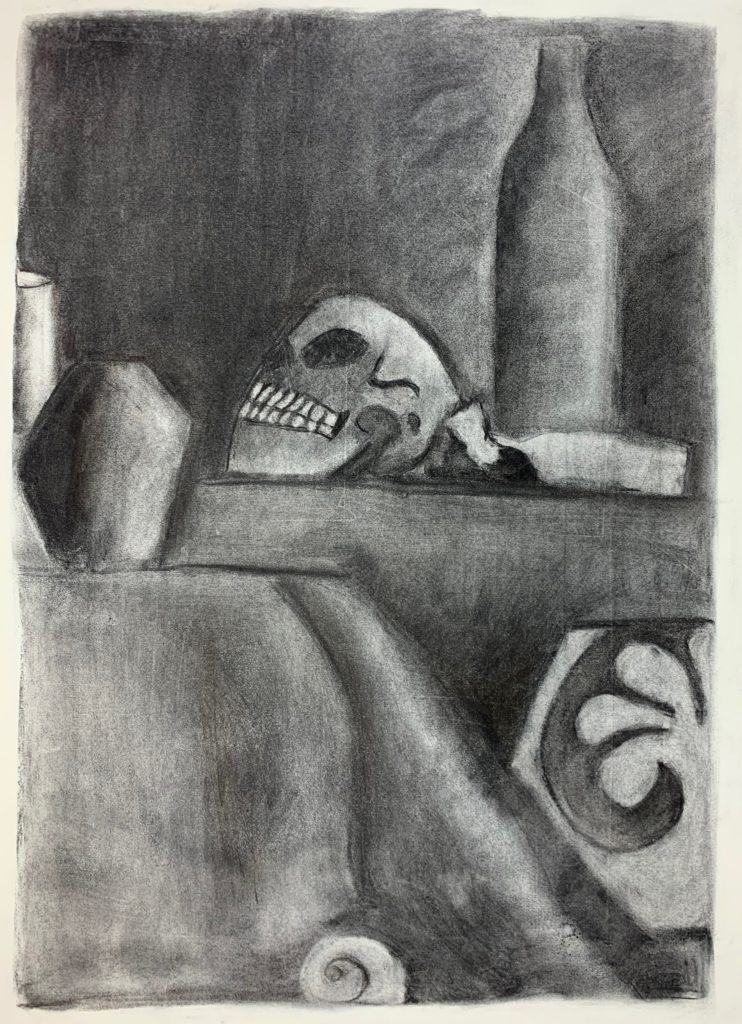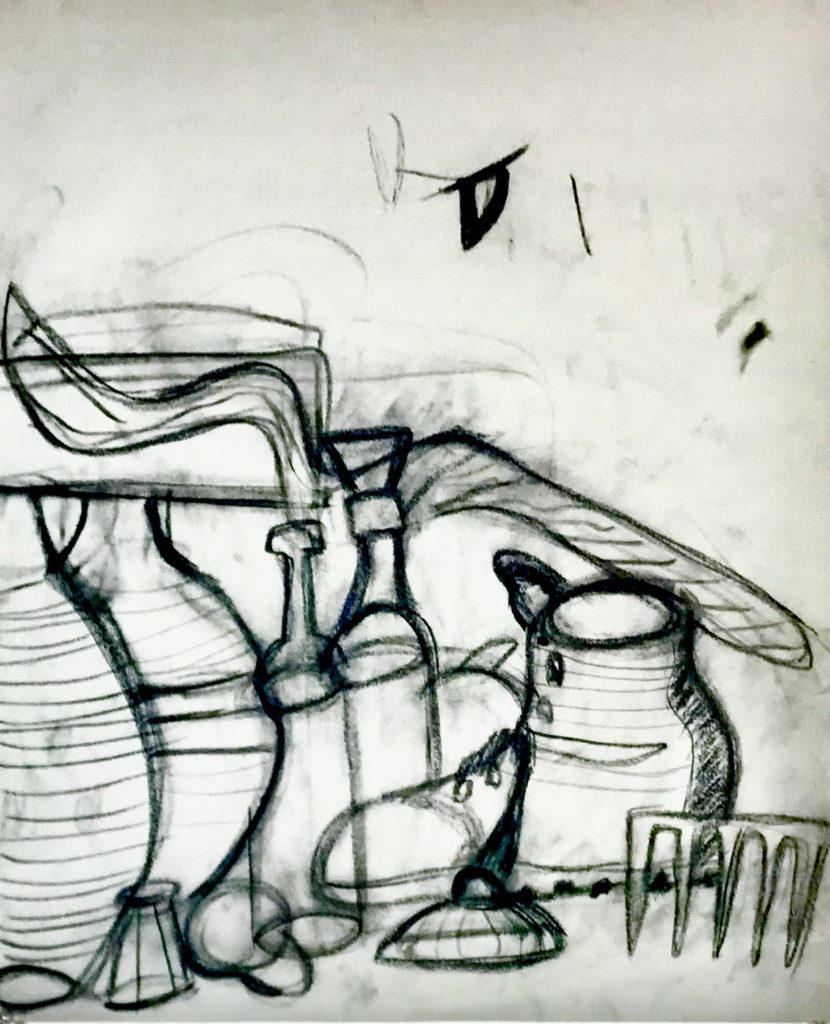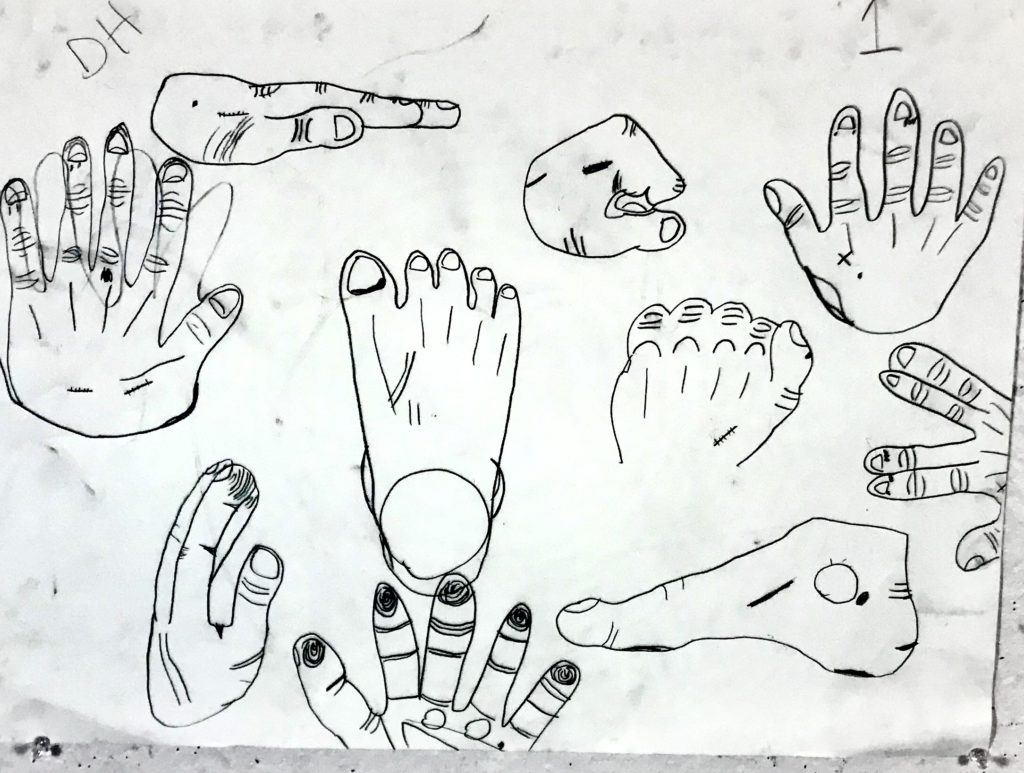This drawing was a still life that I drew during class. It is a drawing with charcoal and keeps proportion in mind as I made sure the sizes of each object were on point with one another. Basic shapes were used quite a bit especially on the bottles and the boot.
Month: November 2019
Hands on my Feet
This artwork is not a still life but rather pictures of hands and feet most of which mine that I have drawn. I covered the details in my hands ranging from any cuts, scars or knuckles all the way to simple wrinkles and even fingerprints in some cases. In each drawing on a hand or foot I made sure they are always in different positions when drawn so it doesn’t get repetitive.
Lunchbox Contours and Cross Hatching

These three pictures of my lunchbox are some of the best contours and cross hatching I’ve done for class so far.
For the contour drawing in the top left corner, I began by drawing the lunchbox without lifting my pencil. I don’t remember using any under drawings for this one. For the other two, however, I believe I did begin by drawing two rectangular prisms stacked on top of one another.
The cross contour drawing was the most difficult for me because it was hard to visualize the dips and rises in the fabric on a grid. If I were to draw this over again, I might spend a bit more time on the cross contour to make sure I have the topography correct.
“Bottles” Value Still Life

I used vine charcoal to draw this picture and started by creating margins on my paper and marking the halfway and quarter way points along the edges. I used these marks to match up my drawing with what I saw using my viewfinder.
I began by mapping out and correcting the general shapes and positions of the objects with several gesture drawings, then I filled in the values of the positive space before moving on to the negative space and background.
It took me a while to draw this picture, although there are still details I missed; for example, the glass bottles had ridges on the top just below the neck that refracted the background image in interesting ways. Given more time, I would include more details like this.
My First Reductive Value Drawing
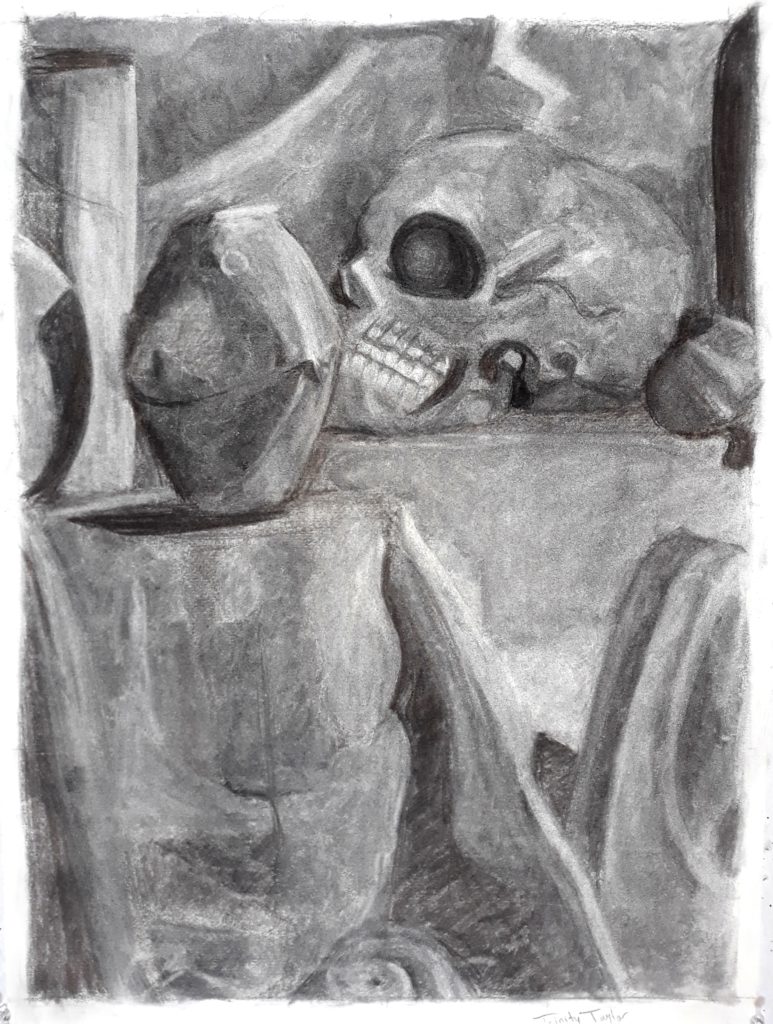
To draw this still life, I first covered my page in vine charcoal, then began drawing in any shapes I saw in a darker tone than the background.
Afterward, I used a kneaded eraser to lighten parts of the drawing with a lighter value, add highlights, and blend. I used the vine charcoal to darken spots with darker values create shadows. At first, the local values of all the objects were blending together, but after emphasizing a few parts of the drawing, most of the objects became distinct. Occasionally, I saw the need to use compressed charcoal to bring out darker parts of the still life where the vine charcoal wasn’t doing the job.
Post #2 here we go

Cross hatching & Negative space
In this drawing the process of crosshatching and the emphasis of Negative space is used. Cross hatching is where lines are used to represent the shape of an object more, similar to Longitude and Latitude lines on a globe. Negative space is the gap between objects that create their own unique shapes.
In this piece I drew objects around my room emphasizing on their 3 dimensional shape as well as the 2 dimensional shapes created by the gaps between them.
Reductive Value Still-Life

The drawing shows a funnel, milk carton, book, and small ball resting in front of a draped curtain. To create this drawing, I covered the paper with vine charcoal. Then, I selectively erased to create the forms of the still life and used compressed charcoal and a white conte crayon to emphasize the lights and darks of the still-life. While this project mostly covers value, aspects basic forms and shapes are also present, as well as negative shapes.
Vine Charcoal Drawing
This is a sketch of someone I drew from my Drawing I class. Vine charcoal is the main medium; A circle was the main basic for the skull and an oval for the the flesh of the face.
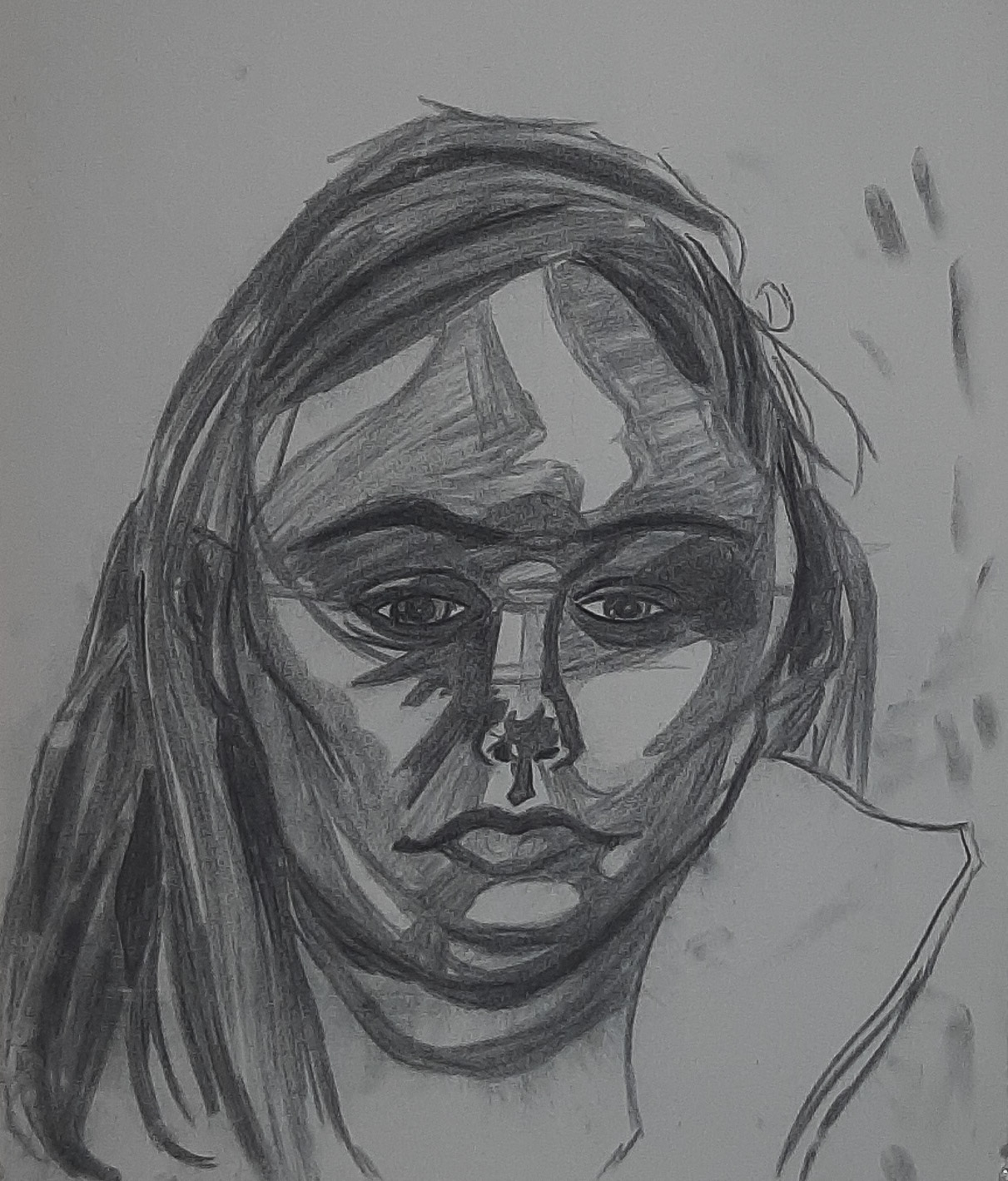
Sketching this way was particularly difficult in that I usually don’t draw base shapes when starting a new piece.
My First Post
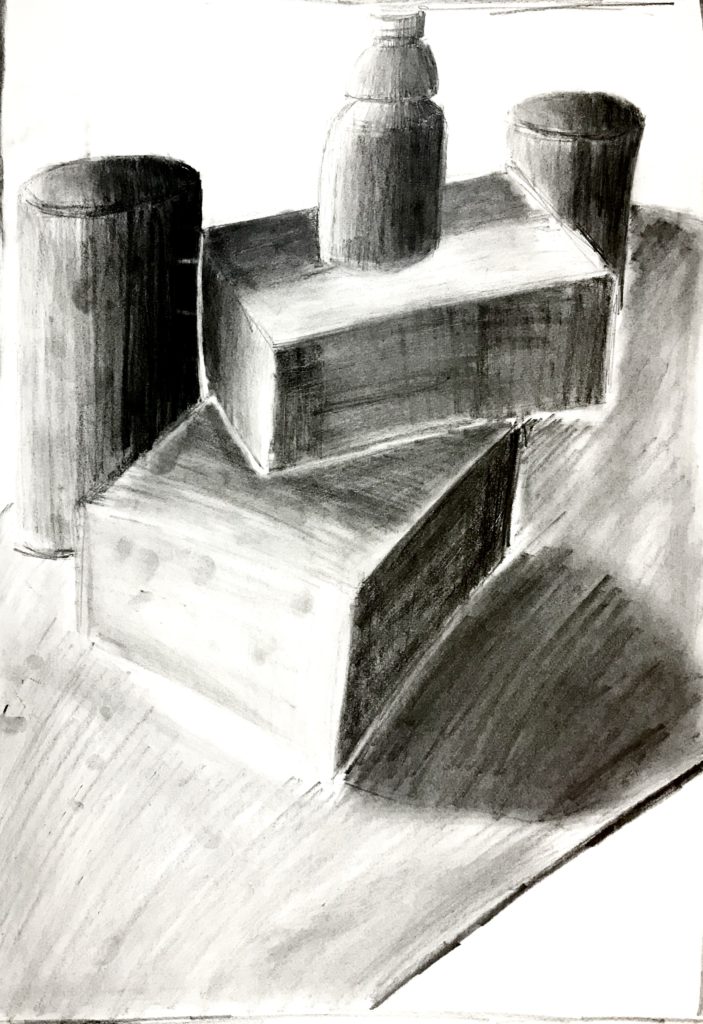
Reductive Value Drawings
